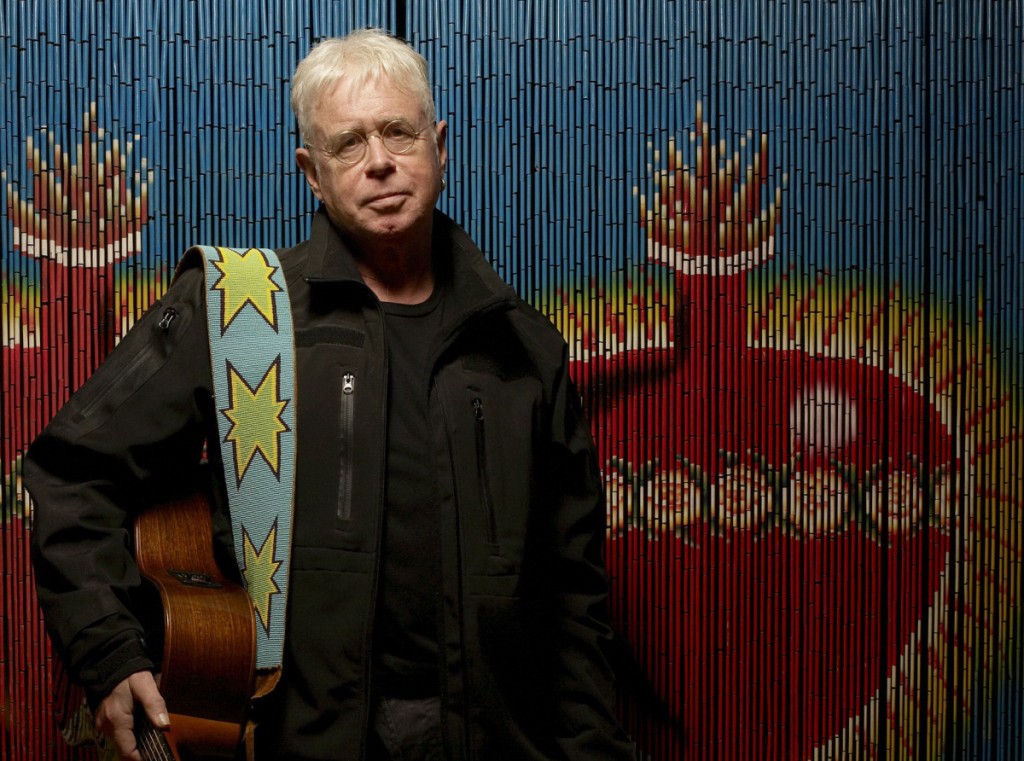When I heard Neil Young would be putting out an album on Nov. 4, the same day that Bruce Cockburn was set to release his autobiography, along with a nine-disc collection of career-spanning music, it got me thinking about how the two artists relate to one another. Young needs no introduction; he’s a renowned guitarist, a two-time Rock and Roll Hall of Fame inductee, and arguably the most celebrated Canadian musician ever. Cockburn? Well, he’s a beloved Canadian musician too, but only in much smaller circles. Despite drawing no shortage of critical praise—when Stevie Ray Vaughan died, Eddie Van Halen was asked by a Rolling Stone interviewer what it felt like to be the world’s best guitarist and responded, “I don’t know, ask Bruce Cockburn”—and boasting a prolific catalogue of quality songs, it’s more likely than not that the average young Canadian has never heard of him.
This isn’t some kind of brazen injustice, and it’s not like the music industry has any responsibility to make sure the presence of an artist is equivalent to his or her skill; but by examining the career paths of Cockburn and Young—two artists that share an uncanny number of objective similarities, yet will come away with vastly different legacies—it becomes evident just how critical subjective factors like exposure and perception are in shaping popular music history.
What’s ironic—but not in any way surprising—about the rise of Young as Canada’s preeminent musician is that it all started in the United States. Like Cockburn, he was born in Ontario in 1945, but in 1966, Young traveled with fellow Canadian bassist Bruce Palmer to Los Angeles and joined three other musicians to form the iconic band Buffalo Springfield. Although Buffalo Springfield split up fairly quickly, Young’s success with them allowed him to play alongside supergroup Crosby, Stills, Nash, and Young and gave him a wider audience for his solo releases than he would’ve had if he had tried to establish himself in Canada.
While Young was jamming with some of the most well known artists of the era, Cockburn dropped out of Boston’s Berklee College of Music and returned to Ontario where he played with far less glamorous bands like The Esquires, The Flying Circus, Olivus, and 3’s a Crowd. Towards the end of the 1960s though, he decided to pursue a solo career, and it was only with his upbeat, radio-friendly 1979 song “Wondering Where the Lions Are” did he finally start getting any notable recognition outside of Canada.
Like Young, who, especially in recent years, has been an enormous advocate for political and environmental issues, Cockburn incorporated advocacy into his music and persona as well. In the 1980s, he began regularly visiting developing countries and addressing political causes. Another of his biggest and most politically charged songs, “If I Had a Rocket Launcher,” is about Guatemalan refugee camps in Mexico that were attacked by military helicopters—but it never quite transcended its era like Young’s “Ohio.”
Essentially all of Cockburn’s individual songs have surprisingly little traction today. Growing up, I listened constantly to Toronto classic rock radio station Q107 and, despite its Canadian content mandate, I can’t ever remember hearing one of his songs played by the station. In fact, Cockburn’s greatest impression to our generation is probably the popular Barenaked Ladies cover of “Lovers in a Dangerous Time”—and most listeners probably don’t realize that it was originally his song.
Of course, the fact that Bruce Cockburn didn’t end up becoming Canada’s biggest musician means absolutely nothing to the artist himself. In a recent interview with Belleville’s The Intelligencer, Cockburn confessed: “I wanted people to come to the music. I wanted people to come to the shows. I didn’t want to be a ‘personality’ in public. I wanted to be anonymous.” Obviously, having an outlook like that makes it unlikely that he would’ve become a megastar, but what’s disappointing is that not even his most popular songs seem to resonate with our generation. Don’t get me wrong, I worship at the altar of Neil Young—but for every 30th time I heard “Heart of Gold” on the radio, it would’ve been nice to hear a little Bruce Cockburn next.









